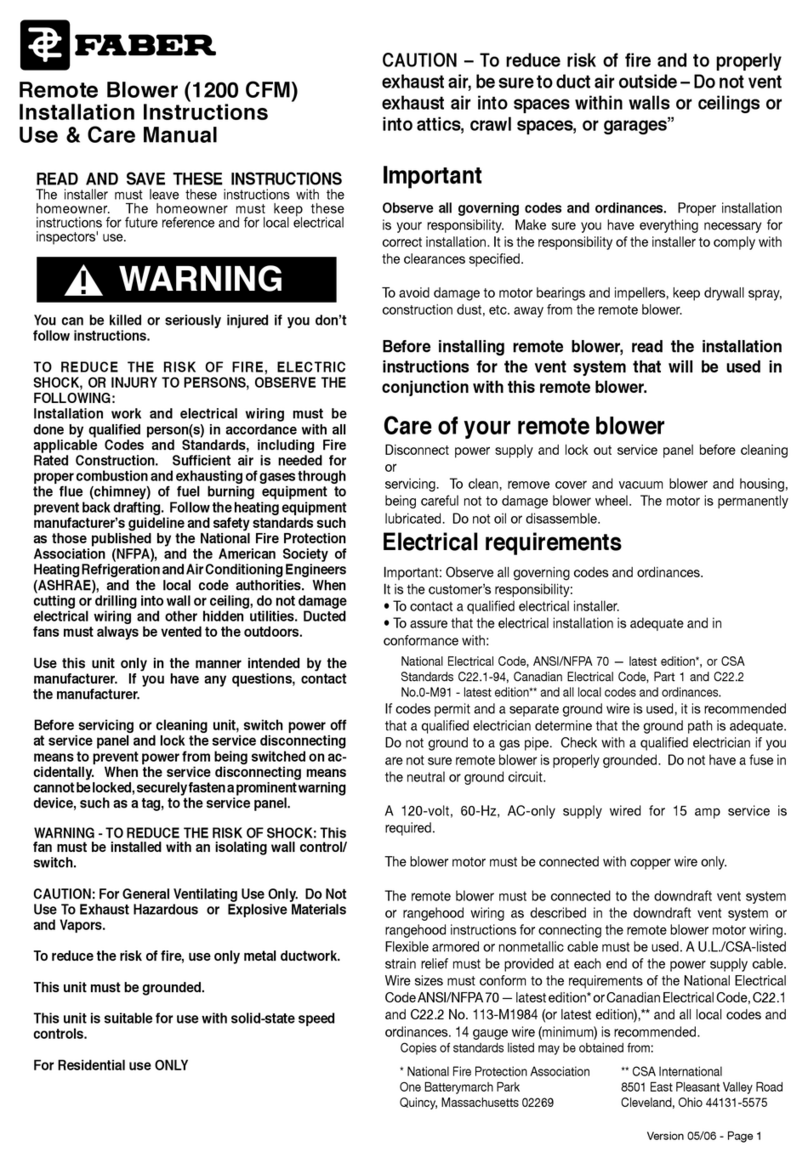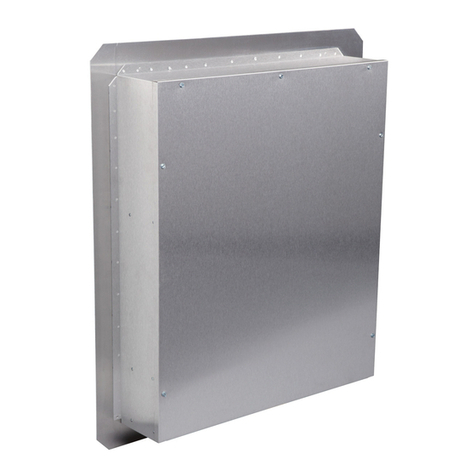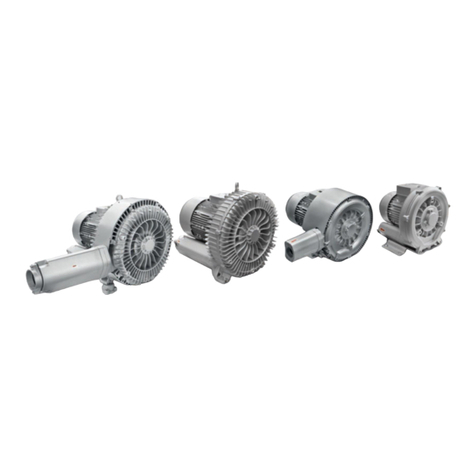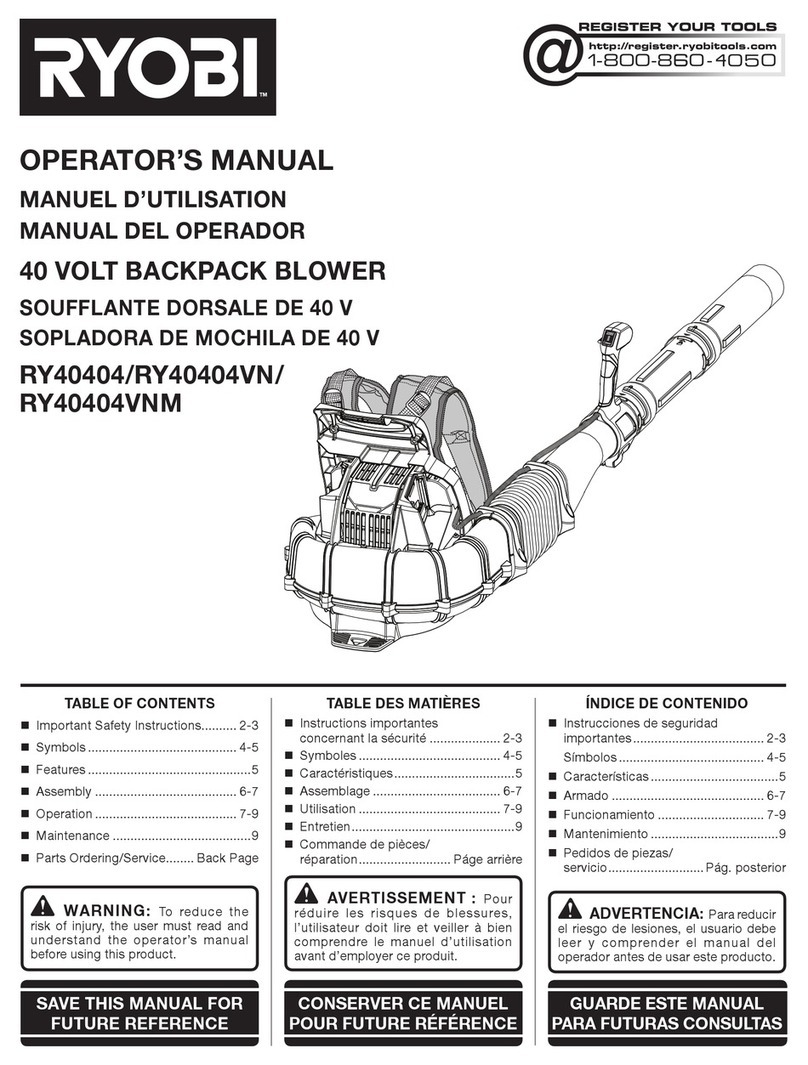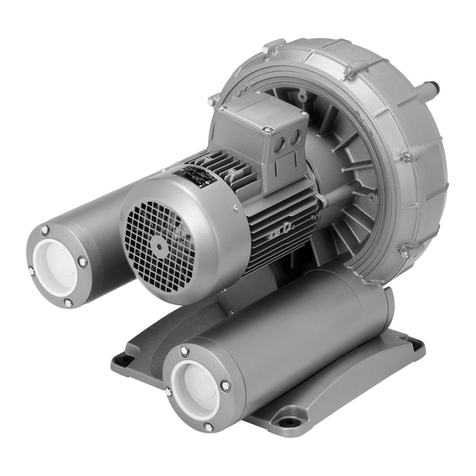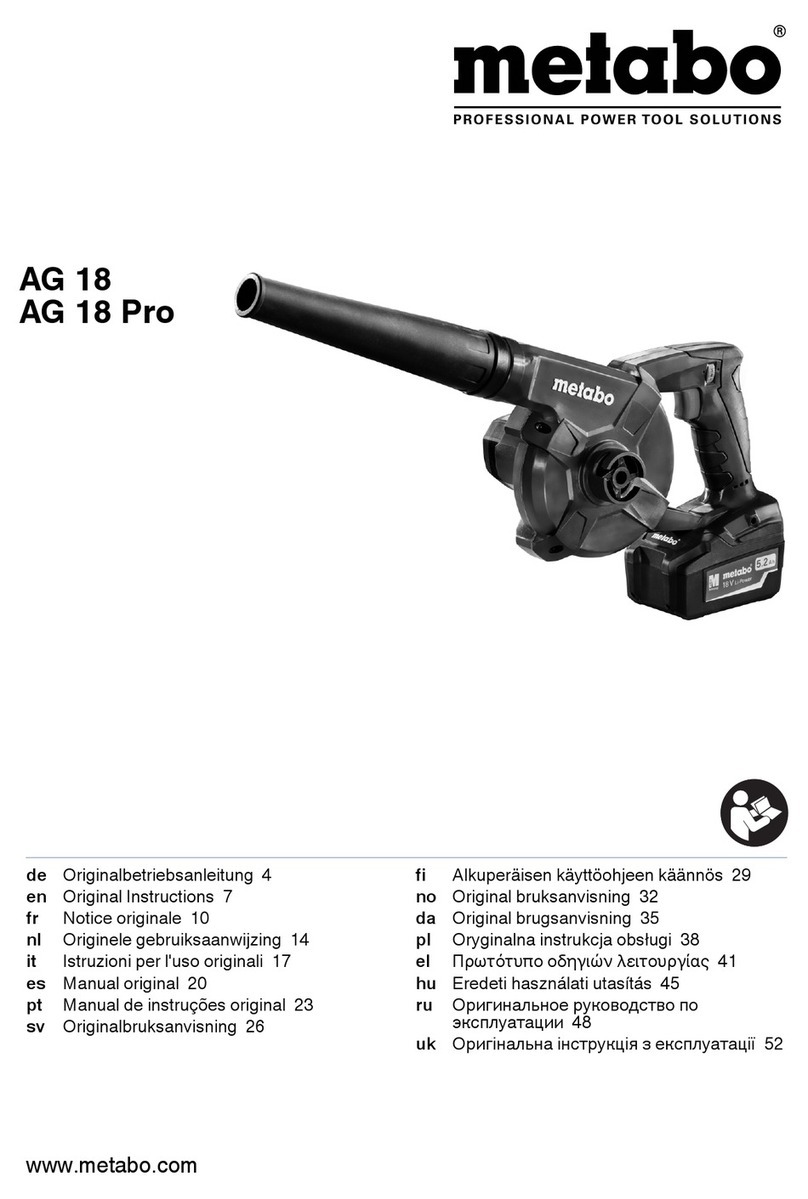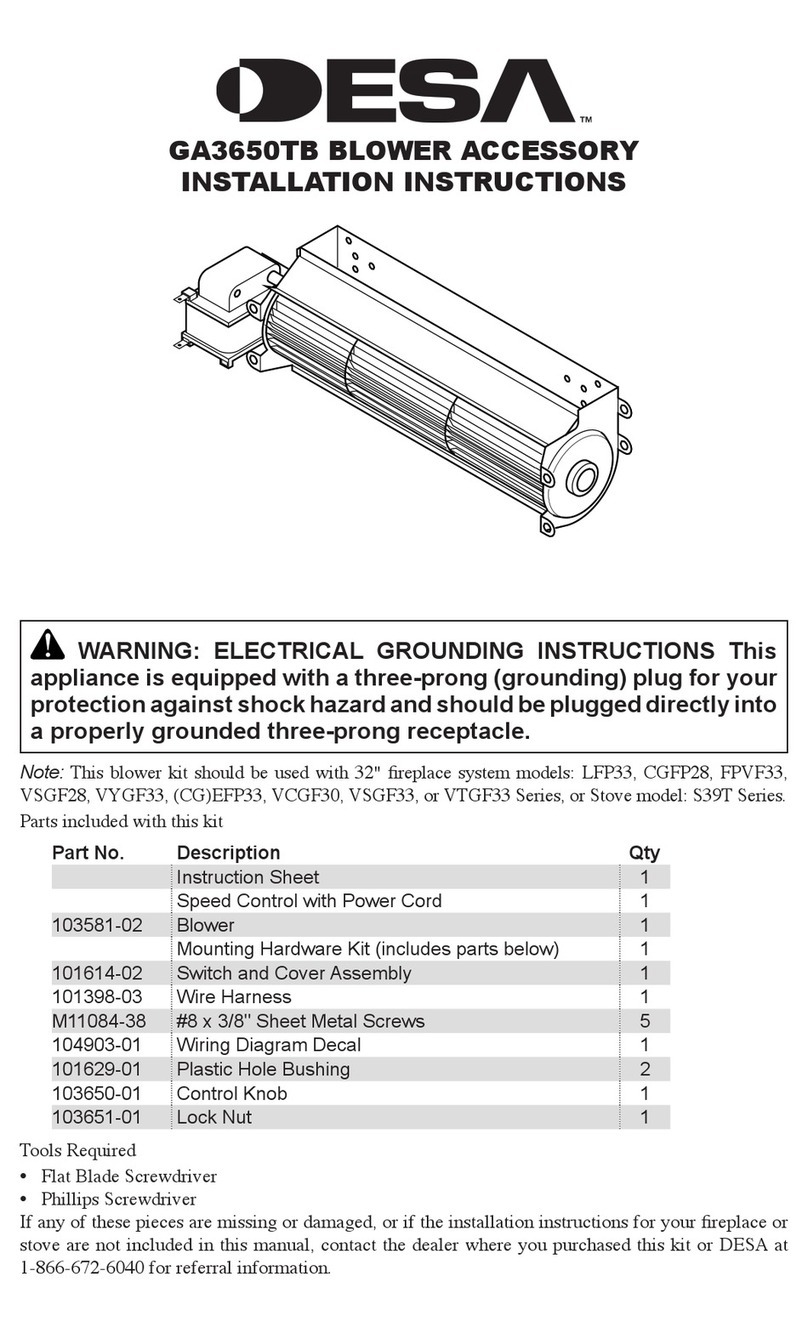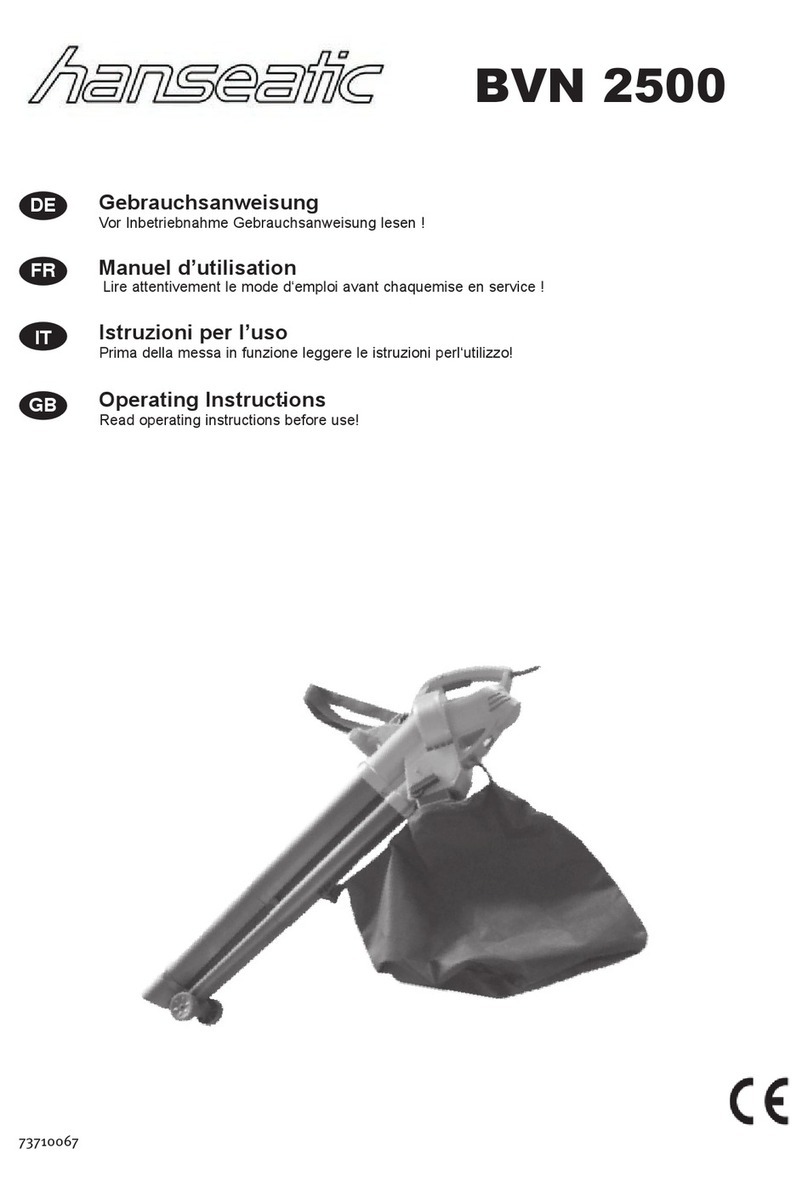Faber RB900 Owner's manual

PAGE 1
Installation Instructions
Use and Care Information
Instructions d'installation
Utilisez et d'entretien
Instrucciones de instalación
Información de uso y cuidado
REMOTE BLOWER 900 CFM / 1200 CFM
RB900
RB1200

PAGE 2
Contents
Important Safety Instructions
Venting Requirements and Installation Preparation
Main Parts
Range Hood Dimensions
Choose Your Installation
Roof Installation
Flat Roof Installation
Wall Installation
Electrical Connections
Wiring Diagram
Warranty Statement
3
5
6
7
8
9
12
14
16
17
18

PAGE 3
READ AND SAVE THESE INSTRUCTIONS
The installer must leave these instructions with the homeowner. The homeowner must
keep these instructions for future reference and for local electrical inspectors' use.
You can be killed or seriously injured if you don’t follow instructions.
TO REDUCE THE RISK OF FIRE, ELECTRIC SHOCK, OR INJURY TO PERSONS,
OBSERVE THE FOLLOWING:
Installation work and electrical wiring must be done by qualified person(s) in accordance
with all applicable Codes and Standards, including Fire Rated Construction. Sucient air is
needed for proper combustion and exhausting of gases through the flue (chimney) of fuel
burning equipment to prevent back drafting. Follow the heating equipment manufacturer’s
guideline and safety standards such as those published by the National Fire Protection
Association (NFPA), and the American Society of Heating Refrigeration and Air
Conditioning Engineers (ASHRAE), and the local code authorities. When cutting or drilling
into wall or ceiling, do not damage electrical wiring and other hidden utilities. Ducted fans
must always be vented to the outdoors.
Use this unit only in the manner intended by the manufacturer. If you have any questions,
contact the manufacturer.
Before servicing or cleaning unit, switch power o at service panel and lock the service
disconnecting means to prevent power from being switched on accidentally. When the
service disconnecting means cannot be locked, securely fasten a prominent warning device,
such as a tag, to the service panel.
WARNING - TO REDUCE THE RISK OF SHOCK: This fan must be installed with an isolating
wall control / switch.
CAUTION: For General Ventilating Use Only. Do Not Use To Exhaust Hazardous or Explosive
Materials and Vapors.
To reduce the risk of fire, use only metal ductwork.
This unit must be grounded.
This unit is suitable for use with solid-state speed controls.
For Residential use ONLY
WARNING

PAGE 4
Important Note: please refer to your hood installation
instructions for connecting the remote blower
CAUTION – To reduce risk of fire and to properly exhaust air, be sure to duct air outside
– Do not vent exhaust air into spaces within walls or ceilings or into attics, crawl spaces,
or garages”
Important
Observe all governing codes and ordinances. Proper installation is your responsibility. Make
sure you have everything necessary for correct installation. It is the responsibility of the
installer to comply with the clearances specified. To avoid damage to motor bearings and
impellers, keep drywall spray, construction dust, etc. away from the remote blower. Before
installing remote blower, read the installation instructions for the vent system that will be
used in conjunction with this remote blower.
Care of your remote blower
Disconnect power supply and lock out service panel before cleaning or servicing. To clean,
remove cover and vacuum blower and housing, being careful not to damage blower wheel. The
motor is permanently lubricated. Do not oil or disassemble.
Electrical requirements
Important: Observe all governing codes and ordinances.
It is the customer’s responsibility:
• To contact a qualified electrical installer.
• To assure that the electrical installation is adequate and in conformance with:
National Electrical Code, ANSI/NFPA 70 — latest edition*, or CSA Standards C22.1-
94, Canadian Electrical Code, Part 1 and C22.2 No.0-M91 - latest edition** and all local
codes and ordinances. If codes permit and a separate ground wire is used, it is
recommended that a qualified electrician determine that the ground path is adequate.
Do not ground to a gas pipe. Check with a qualified electrician if you are not sure
remote blower is properly grounded. Do not have a fuse in the neutral or ground circuit.
A 120-volt, 60-Hz, AC-only supply wired for 15 amp service is required. The blower
motor must be connected with copper wire only. The remote blower must be
connected to the rangehood wiring as described in the rangehood instructions for
connecting the remote blower motor wiring. Flexible armored or nonmetallic cable
must be used. A U.L./CSA- listed strain relief must be
provided at each end of the power supply cable. Wire sizes must conform to the
requirements of the National Electrical Code ANSI/NFPA 70 — latest edition* or
Canadian Electrical Code, C22.1 and C22.2 No. 113-M1984 (or latest edition),** and all
local codes and ordinances. 14 gauge wire (minimum) is recommended.
Copies of standards listed may be obtained from:
* National Fire Protection Association
One Batterymarch Park
Quincy, Massachusetts 02269
** CSA International
8501 East Pleasant Valley Road
Cleveland, Ohio 44131-5575

PAGE 5
Venting requirements
Determine which ducting method is best for your application. Duct system can extend
either through the wall or the roof. Locate the remote blower so that the length of the
duct system and the number of elbows is kept to a minimum to provide ecient
performance. Where possible, remote blower should be centered between wall
studs or roof rafters. The size of the duct system should be uniform.
Do not install two elbows together. Use duct tape to seal all joints in the duct system. Use
caulking to seal remote wall or floor opening around the cap. Flexible duct is not
recommended. It creates back pressure/air turbulence and greatly reduces performance. Make
sure there is proper clearance within the wall or floor for exhaust duct before making cutouts.
Avoid pipes, wires, or other duct systems that may be running through the wall. Do not cut a
joist or stud unless absolutely necessary. If a joist or stud must be cut, then a supporting
frame must be constructed.
Maximum length of ductwork
Duct length is given as a general reference only. For a longer duct run, or smaller duct system,
contact a qualified and trained duct installer. Check with local codes for makeup air
requirements, if any. It is recommended that you use round duct instead of rectangular duct,
especially if elbows are required. If rectangular duct is required, if should be transitioned to 10"
round duct as soon as possible.
For best performance, use no more than three 90° elbows. If more than one elbow is used,
make sure that there is a minimum of 24 inches of straight duct between any two elbows. Do
not install two elbows together. 55 feet for 10" round ductwork - count 90° elbows as 5 feet
and 45° elbows as 3 feet.
NOTE: A very short duct run with remote blowers is NOT RECOMMENDED due to excessive
noise levels. An internal blower may be advisable with our range hoods to keep noise levels
lower.
Preparing for installation
1. Discard any cardboard packaging and foam protection from the blower edges. BEFORE
PROCEEDING, CHECK FOR PHYSICAL DAMAGE TO THE MOTOR AND BLOWER ASSEMBLY,
TO DO SO, REACH IN THROUGH THE INTAKE COLLAR AND SPIN THE FAN BLADES SLOWLY.
THEY SHOULD TURN FREELY AND QUIETLY WITHOUT VIBRATION. If cosmetic or motor
damage is seen at this point, STOP the installation and contact your dealer.
2. Remove the external blower cover with the outside screws and also the inside wiring box cover.
3. Attach an appropriate UL / CSA strain relief in the electrical knockout. NOTE: for most
installations, it is recommended that the strain relief be installed so that it can be tightened
from inside the remote blower housing.
4. It is advisible to verify operation of the blower and the speed changes before making any
cuts. Make a temporary electrical connection (see page 16 for electrical connection) and
connect to your range hood first. See your hood installation manual for connecting the blower
to the hood. Once temporary electrical connections are made, turn on your circuit. If the blower
does not operate properly, please stop installation and contact your dealer. Once operation is
verified, turn o the circuit and disconnect the wiring from the wiring box.

PAGE 6
1A) Blower RB900 OR RB1200
2A) 10" Flange “FLANGE10” (for use with hoods which require a FLANGE10 or
as described in your hood’s Use and Care Manual in the COMBINATIONS HOODS
AND MOTOR KITS section.)
3A) 10" flange with wire box “INLBKIT”(for use with Inca Pro Plus) plus
installation screws
REMOTE BLOWER CONTENTS
To avoid the risk of fire due to the unit overheating:
• DO NOT install this blower with a hood or
downdraft vent that has an internal blower
• DO NOT install more than one blower to
increase the of the duct run. Even small
dierences between blower air flow rates
can greatly reduce the air draw by the hood or
downdraft vent.
WARNING

PAGE 7
PRODUCT DIMENSIONS
NOTE: MAKE SURE THE DISCHARGE END OF THE REMOTE BLOWER
FACES AWAY FROM THE DIRECTION OF THE PREVAILING WINDS.
INSTALL THE DISCHARGE END OF THE FAN FACING AN
UNOCCUPIED SPACE
RB900
RB1200

PAGE 8
OUTSIDE WALL MOUNTROOF MOUNT
FIGURE 1
Hood
Roof
10” Elbow
10” Duct
Hood
10” Elbow
Outside
Wall
Choose your installation - Roof or Wall Installation
You can be killed or seriously injured if you don’t
follow instructions.
Excessive Weight Hazard
Use two or more people to move and install a
remote blower.
Failure to do so can result in back or
other injury.
WARNING
Choosing the Proper Location
1. Install the blower in a location that allows it to be accessed for service if necessary. There
must be enough room to remove the top cover.
2. The mounting location needs to allow for a cutout below the unit for ducting and electrical
connections to fit through the wall or roof and into the range hood.
3. Avoid installing the blower in a location where the exhaust exit could be exposed to rain
blowing into internal components. The exhaust may be shielded if absolutely necessary, without
obstructing airflow.
4. When mounted in an exposed area the blower has be to shielded or the cover needs to be
sealed to prevent accumulation of water. When installing in horizontal applications
(SEE FIGURE 7), the exhaust must be pointing in the same direction as prevailing winds. The
discharge must point down in a vertical mounting applications.

PAGE 9
9 1/8”
7 5/8”
23 1/4”
6 1/32”
Roof Raer
Roof Raer
11” dia.
hole
1 1/4”
dia. hole
Pilot
Hole
7 13/32”
OUTSIDE - ROOF VIEW
9 3/8”
34”
10 5/8”
11 7/8”
Roof Raer
REMOVE
SHINGLES
11” dia.
hole
1 1/4”
dia. hole
Pilot
Hole
Roof Raer
OUTSIDE - ROOF VIEW
15”
27 1/2”
REMOVE
SHINGLES
FIGURE 2 - Roof Installation RB900
14”
Roof Installation
17 3/4”
FIGURE 3 - Roof Installation RB1200

PAGE 10
1. Choose a location on the roof that minimizes the duct run. Avoid obstacles such as TV
leads, electric lines, etc. If remote blower top is level with roof peak, it will not be seen
from street. Remember this location as you work from inside the attic. Measure THE
DISTANCE BETWEEN YOUR RAFTERS BEFORE YOU BEGIN. Make sure you have enough
room between rafters for electrical and duct holes. (See FIGURE 2 and 3)
2. CLOSE TO YOUR CHOSEN LOCATION FROM THE INSIDE OF YOUR ATTIC OR CRAWL
SPACE. Start by marking and drilling a pilot hole up thru the roof halfway between roof
rafters.
3. From the outside, using the guide hole as a starting point, mark the rectangular cut-
out as indicated in FIGURE 2 & 3. Remove ONLY the shingles in THIS AREA.
RB1200 = 27 1/2” wide x 34” high , RB900 = 17 3/4” wide x 23 1/4” high
4. Mark an 11” diameter circle around the ducting guide hole as indicated in FIGURE 2 and
3. Mark the center of the 1-1/4” diameter hole for the electrical wiring as indicated in
FIGURE 2 and 3.
5. Break the electrical knock out hole in the back of the blower. Bring proper electrical
wiring through the knockout hole into the blower and secure it according to local codes.
6. Cut out the roof boards along the 11” diameter circle. Drill the 1 - 1/4” diameter electrical
wiring hole.
7. Remove roofing nails from the upper two-thirds of the shingles to allow the back
flashing sheet on the remote blower housing to fit under them. See FIGURE 4.
8. Center the remote blower ring in the 11” diameter hole, making sure that the 1 - 1/4”
diameter electrical wiring hole in the roof lines up with the hole in the wiring box.
9. Attach the remote blower to roof or frame using screws appropriate for your
installation. All four holes in the back panel must be sealed to prevent moisture that may
get inside the remote blower housing from leaking into the home.
10. Seal all the shingles around the remote blower housing, flashing sheet, and
mounting screw heads or frame with a good grade of roofing cement. Top and side
flanges of the back plate may be covered with trim. It is recommended that electrical
connection be made and checked first. Do not block the vent grill opening at the bottom
of the trim. Doing so will decrease blower performance.
11. CHECK FOR FREE MOVEMENT OF THE DAMPER
12. Go to “electrical connections”, Page 16.
Roof installations (See Page 12 for Flat roof installations)

PAGE 11
Flange under
shingles
Sealant
Sealant
Roof
10” Round
duct
adjustable
elbow
Blower
Air
exhaust
NOTE:
Connect the blower to the exhaust system with a 10” diameter metal duct only. Use a 10”
adjustable elbow to adjust to the roof angle. IMPORTANT: You must run 10” RIGID round
duct work from the external blower to the ceiling. Reducing to smaller ducting will greatly
reduce performance and possibly reduce the life span of the blower.
Tape and screw all joints to prevent air leaks.
FIGURE 4
Flange over
shingles
electrical
wires
Roof installations (Connecting Ductwork)

PAGE 12
Flat Roof Installations RB1200
Flat Roof Installations RB900
2 x 4 framing
recommended
discharge side of
blower
7”
11”
diameter hole
2”
23 1/4”
17 3/4”
11”
diameter hole
7”
2 x 4 framing
recommended
33 1/4”
discharge side of
blower
26 3/4”
2”
FIGURE 5
FIGURE 6
Flat roof installations

PAGE 13
Flat roof installations
1. Locate the 11" diameter hole between rafters.
2. Build a sloping base or roof curb that will mount the remote blower at a
minimum pitch of 2 - 1/2". (See FIGURE 5 and 6)
3. Weatherproof the base as required with proper sealant.
4. Locate the base so that the remote blower’s vent aligns with the 11" diameter
hole and the blower sits evenly on the base with no gaps.
Note: Make sure that the discharge end of the remote blower faces away from the
direction of prevailing winds. (FIGURE 7)
5. Use dimensions from either FIGURE 2 or 3 to locate the 1-1/4"
diameter wiring hole. CONTINUE WITH PART # 6 UNDER ROOF INSTALLATIONS
ON PAGE 10.
roof curb
prevailing
winds
Blower
exhaust
FIGURE 7

PAGE 14
WALL INSTALLATION - RB1200
15”
27 1/2”
14”
9 3/8”
34”
10 5/8”
OUTSIDE - WALL VIEW
1 1/4”
dia. hole
Wall Stud
Wall Stud
11” dia.
hole
REMOVE
SIDING
Pilot
Hole
WALL INSTALLATION - RB900
7 13/32”
17 3/4”
9 1/8”
7 5/8”
23 1/4”
6 1/32”
1 1/4”
dia. hole
Wall Stud
Wall Stud
OUTSIDE - WALL VIEW
11” dia.
hole
REMOVE
SIDING
Pilot
Hole
FIGURE 8
FIGURE 9
Wall Installation

PAGE 15
Wall installations
1. Choose a location on an outside wall where no wall studs, wires, pipes, etc. run through the
opening area. A minimum distance of 24" from remote blower to ground may be required
depending on local code. Make sure to leave room for anticipated snowfall in your region.
2. Drill the ducting pilot hole in the center of the 11" diameter opening area. Make sure you have
enough room between wall studs for electrical and duct holes to fit. See FIGURE 8 or 9
3. Mark a 27 1/2” X 34” (RB1200) OR Mark a 17 3/4” x 23 1/4” (RB900) rectangle on the wall as
indicated in FIGURE 8 or 9
4. Using FIGURE 8 (RB900) AND FIGURE 9 (RB1200) , cut and remove only the external siding in
the rectangular shaped shaded area ONLY. DO NOT CUT THRU WALL / SHEATHING. Nail down all
siding ends.
5. Mark an 11" diameter circle around the guide hole as indicated in FIGURE 8 OR 9. Mark the center
of the 1-1/4" diameter hole for electrical wiring as indicated in FIGURE 8 OR 9.
6. Cut the 11” diameter hole all the way through the wall / sheathing. Drill the 1 1/4” diameter
electrical wiring hole.
7. Break the electrical knock out hole in the back of the blower. Bring proper electrical wiring
through the knockout hole into the blower and secure it according to local codes.
8. Run a large bead of caulk on the back side of the blower housing along the outer edge.
9. Center the remote blower ring in the 11" diameter hole, making sure that the 1 1/4" diameter
electrical wiring hole lines up with the hole in the wiring box.
10. Attach the remote blower to wall using screws appropriate for your installation. All four holes in
the back panel must be sealed to prevent moisture that may get inside the remote blower housing
from leaking into the home.
11. Seal all around the mounting screw heads with a good grade of outdoor caulking.
12. CHECK FOR FREE MOVEMENT OF THE DAMPER
13. Go to “electrical connections”, Page 16.

PAGE 16
1 . Make the electrical connections, taking the electrical cable previously put thru the
knock out hole. Connect the white and black wires of the power supply cable wire to the
white and black wires in the remote blower wiring box with twist-on connector. Connect
the green power supply ground wire to the green ground screw.
2. Place the wire box cover back on the wirebox with the provided screws.
3. Reinstall the exterior remote blower box housing back onto the blower with provided
screws.
4. Refer to your hood manual for finishing electrical connections.
You can be killed or seriously injured if you don’t follow
instructions.
TO REDUCE THE RISK OF FIRE, ELECTRIC SHOCK, OR
INJURY TO PERSONS, OBSERVE THE FOLLOWING:
• Disconnect power before making electrical connection.
• Connect the ground wire to green ground screw in wiring box.
Failure to do so can result in death or electrical shock
WARNING
Electrical Connections
FIGURE 10

PAGE 17
Wiring Diagram

PAGE 18

PAGE 19

991.0625.963_01 - 200629
D00006970_00
This manual suits for next models
1
Table of contents
Other Faber Blower manuals
Popular Blower manuals by other brands
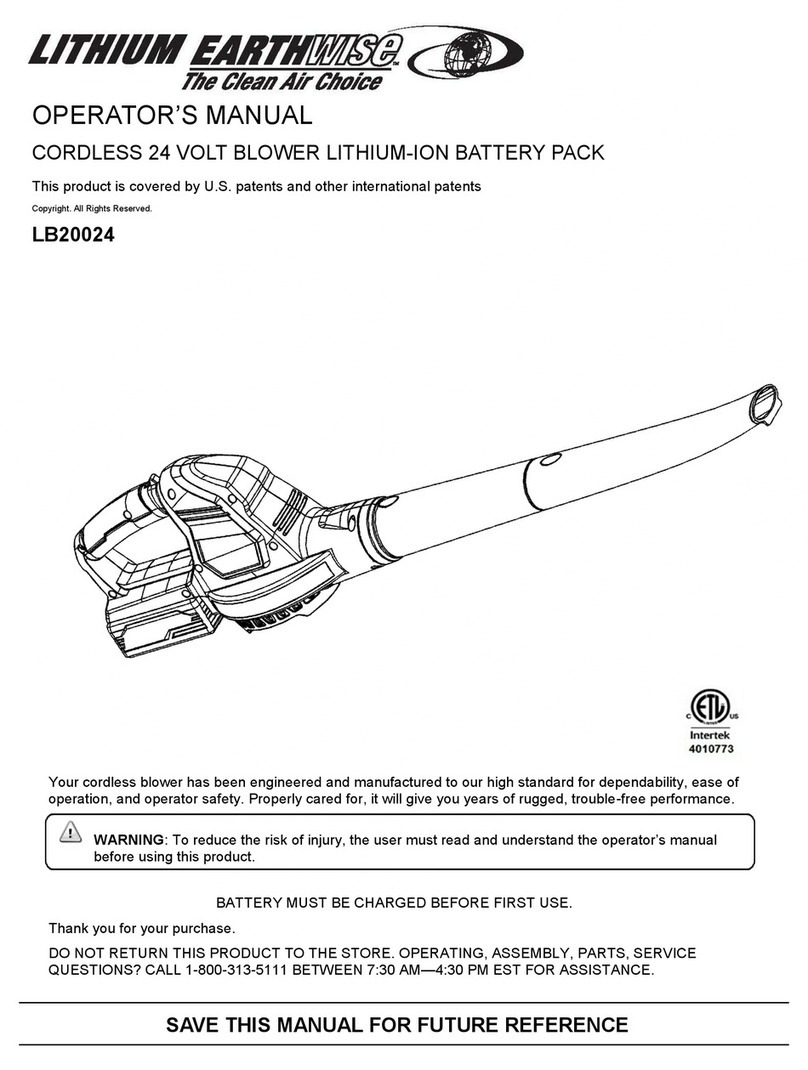
Lithium Earthwise
Lithium Earthwise LB20024 Operator's manual
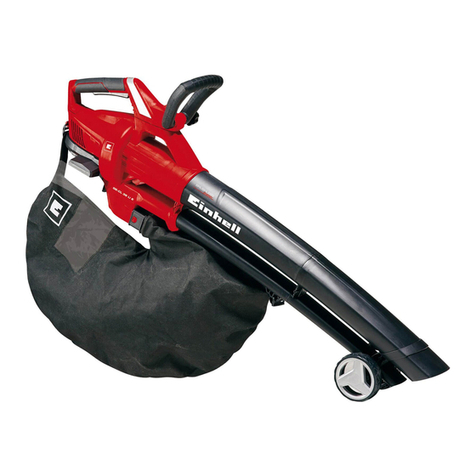
EINHELL
EINHELL GE-CL 36 Li E Original operating instructions
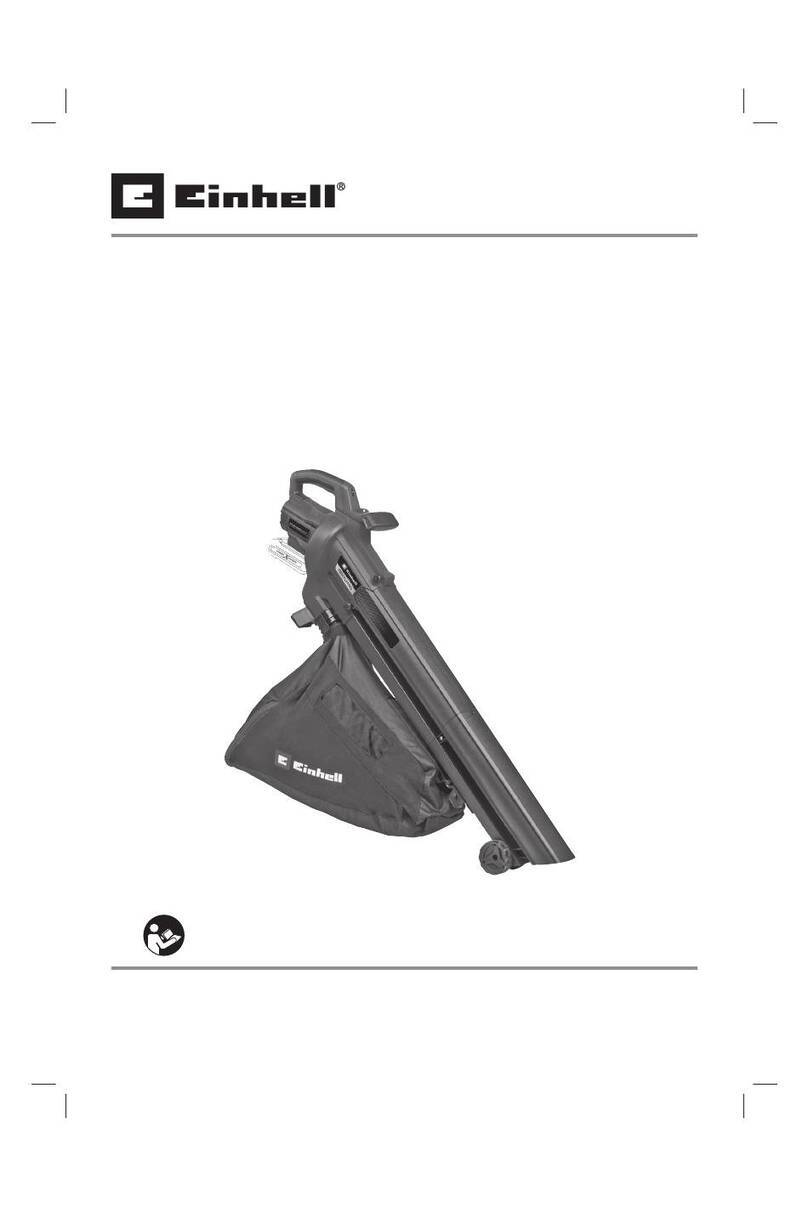
EINHELL
EINHELL VENTURRO 18/210 operating instructions
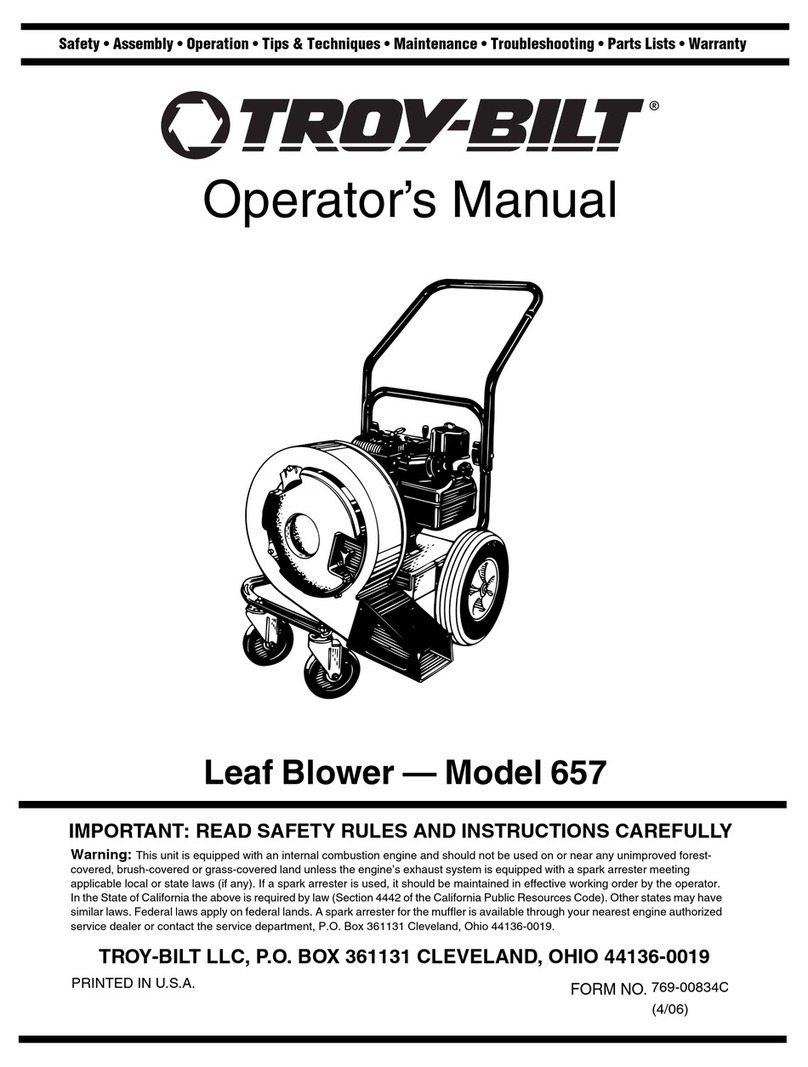
Troy-Bilt
Troy-Bilt 657 Operator's manual
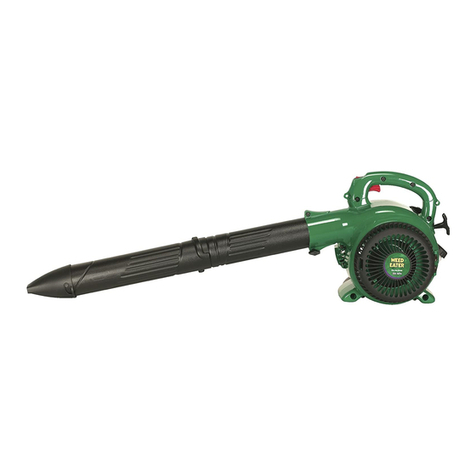
Weed Eater
Weed Eater VS2000BV instruction manual
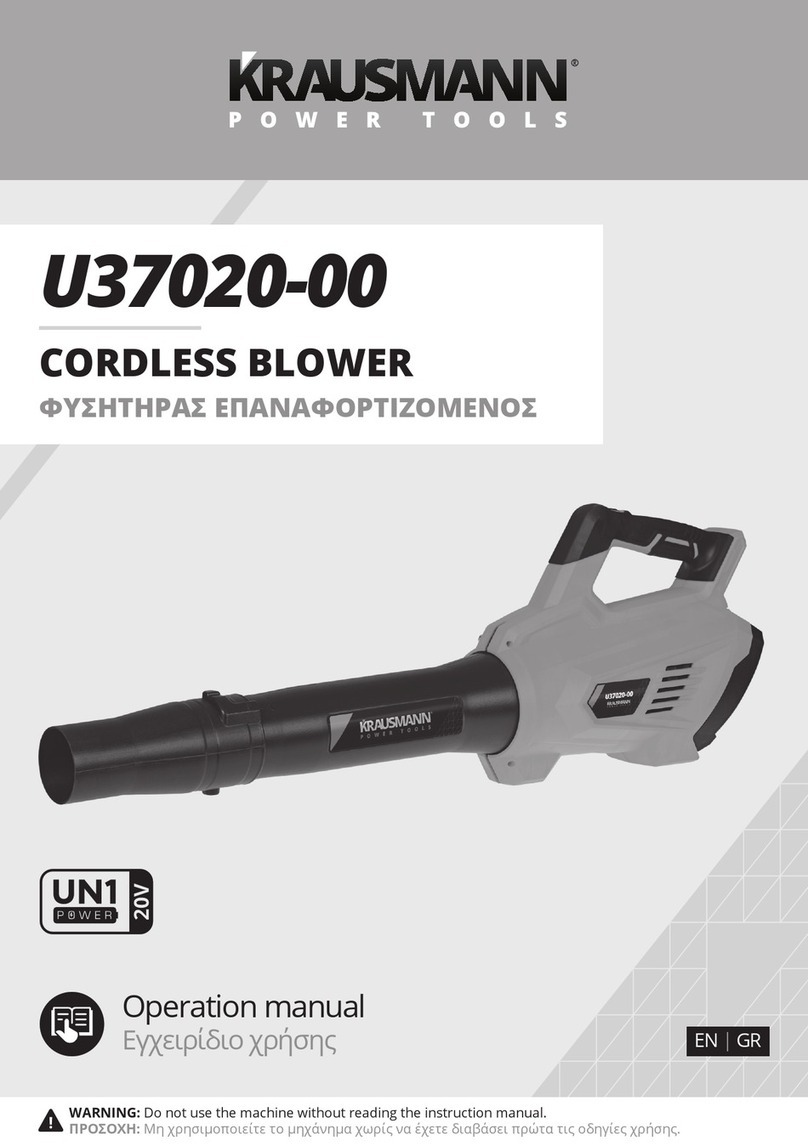
KRAUSMANN
KRAUSMANN U37020-00 Operation manual

